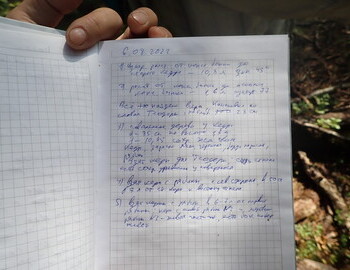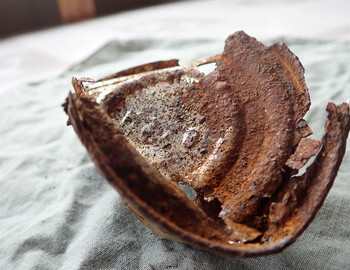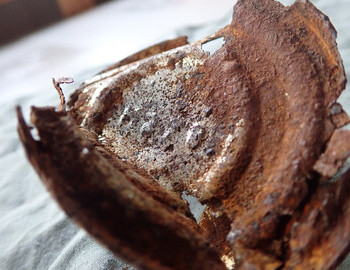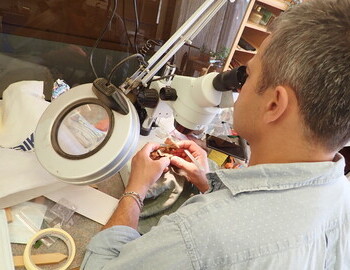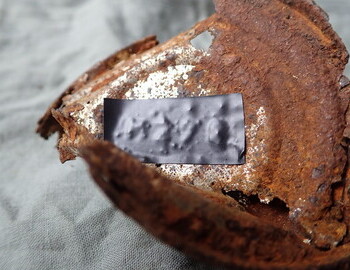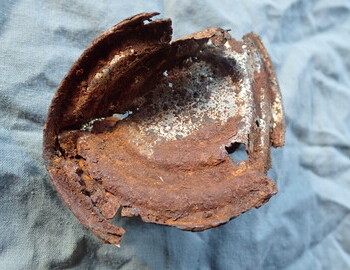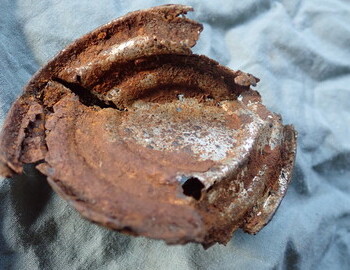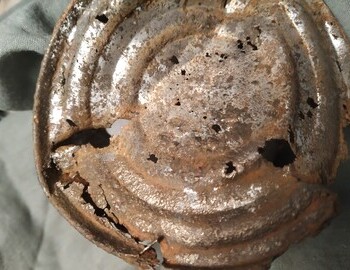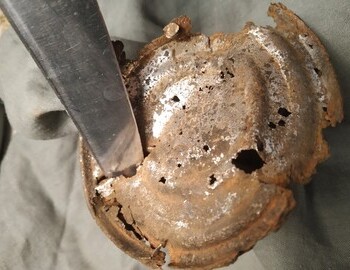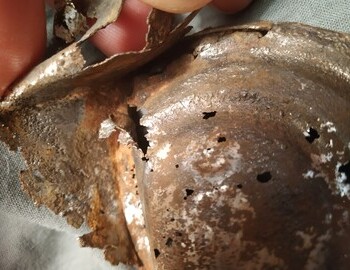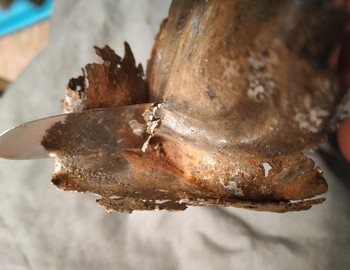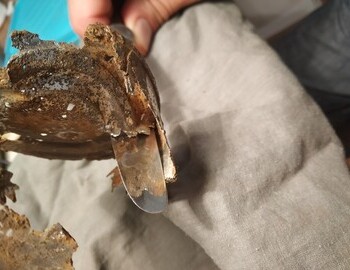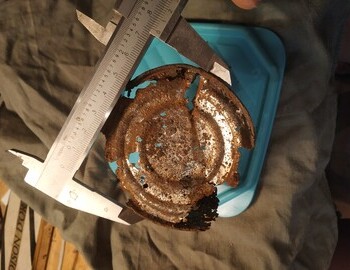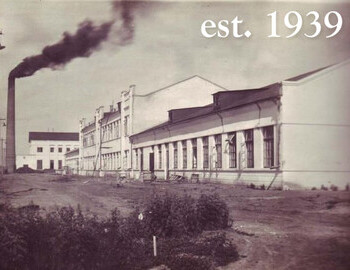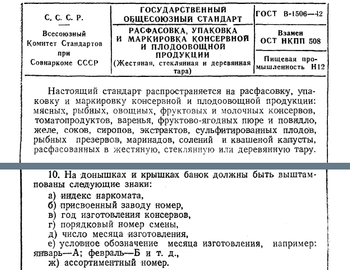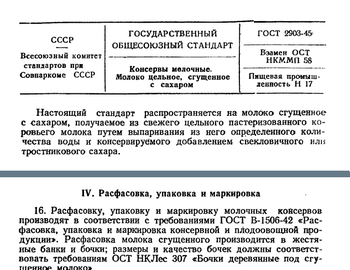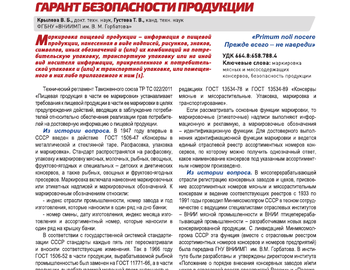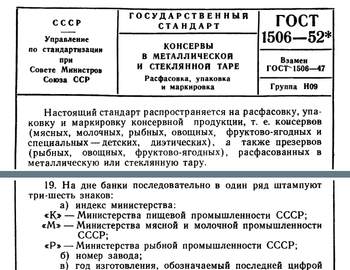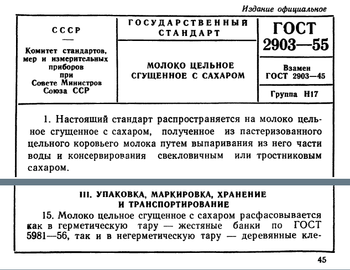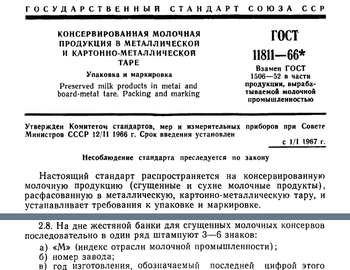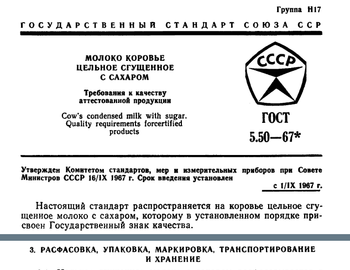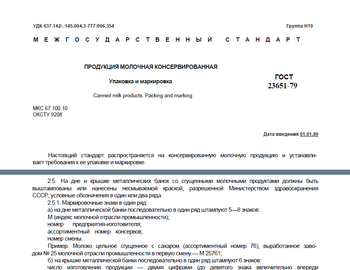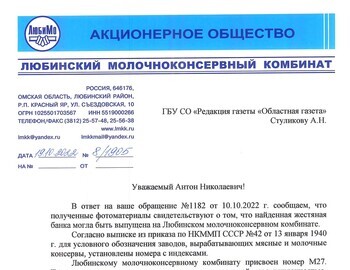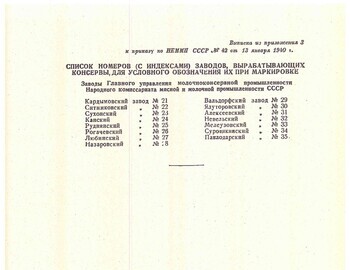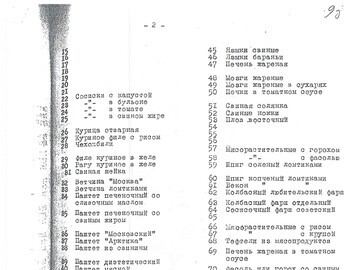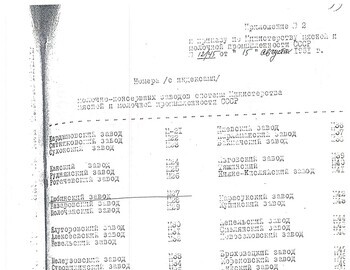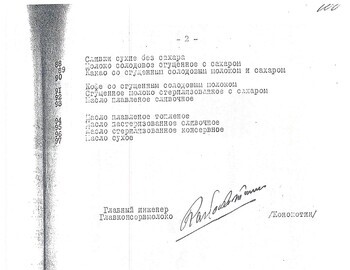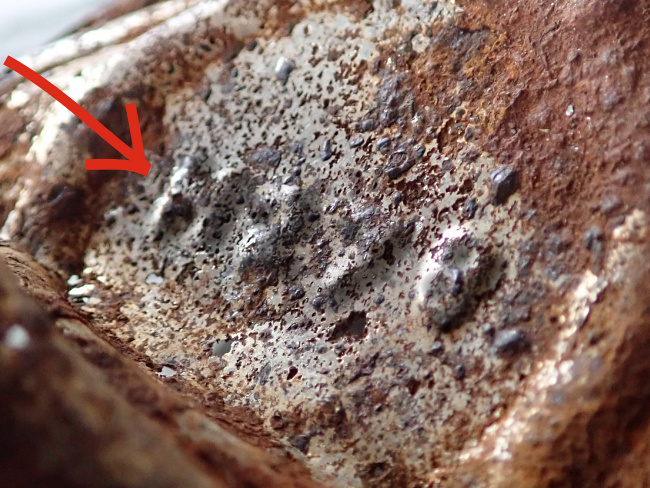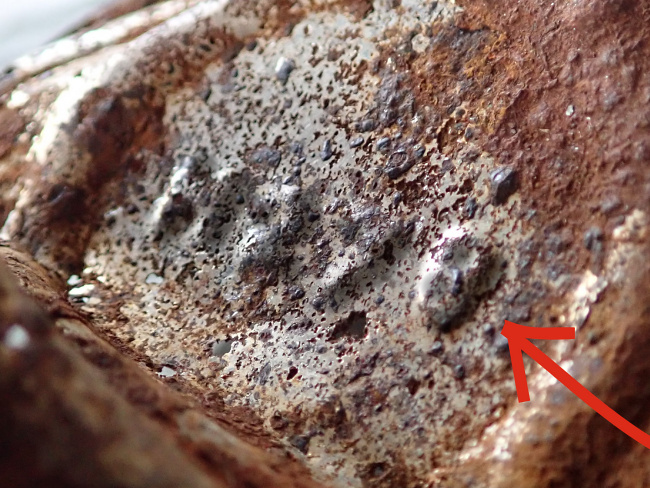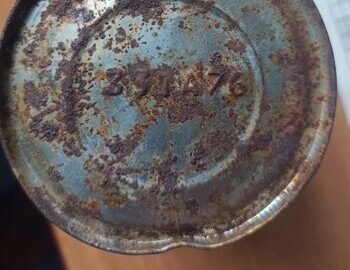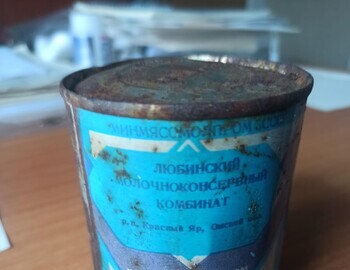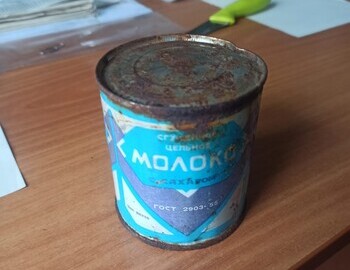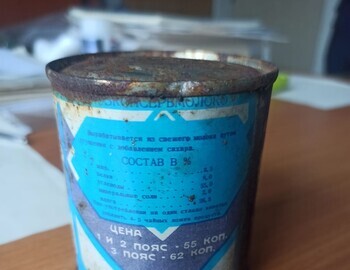
Любинский молочноконсервный комбинат
Tin can found with metal detector 28 cm deep in the ground under mesh of thick roots 10.8 m from the cedar tree azimuth 45° on August 6, 2022. The microscopic analysis by expert Yoan Donev shows characters M278. As you will see below this is condensed milk which was found in the cache site (labaz) of the Dyatlov group. Maslennikov's list of products from the labaz →
After a joined investigation with Dyatlov case researcher that goes by the nickname Энсон (svotrog1079.mybb.ru) we concluded that this is a tin can from a condensed milk made in 1958 by Lyubinskiy Molochnokonservnyy Kombinat which is close to Yekaterinburg.
We first thought that we see holes from bear fangs, the Russians thought it was axed. Yoan Donev, expert from the Central Laboratory for Conservation and Restoration at the National Historical Museum in Bulgaria, said that the can was empty because if it was unopened the body would have been stronger, and the tin can was crushed in one of the following ways:
"A) embrittlement due to corrosion;
B) someone stepped on it;
C) fall of a branch/stone something from nature, ice...
Could have been crushed by the same tree that fell on top of the tent (or its branch)."
Yoan Donev confirmed that the cuts on the lid correspond to an opening with a knife to drink the milk and there is a second round whole that could have been to let the air in. The second hole doesn't have the characteristics of being opened with a tool, but the elongated one is made with a blade.
There is a hypothesis about the can being used as a grenade, seems to be a practice to make grenades from tin cans during the war. Expert's comment: "I think it was a regular can, not a grenade, because if it had been exploded or even just enlarged by the contents spoiling, there would have been signs of inflation. Also the edges of the elongated cut are inverted inwards (possibly forced with a blade), where on explosion they would curve outwards."
My thanks for the introduction into the Soviet State standards to Энсон (svotrog1079.mybb.ru).
State Standards Cans and Preserves Fish Official edition Moscow (GOST 1506-52)
. . . . .
18. Can labeling. Symbols must be stamped on the bottom and lid of a non-lithographed can.
19. At the bottom of the can, three to six characters are stamped in succession in one row:
a) ministry index:
«К» — USSR Ministry of Food Industry;
«М» — Ministry of Meat and Dairy Industry of the USSR;
«Р» — Ministry of the Fishing Industry of the USSR;
b) plant number;
c) the year of manufacture, indicated by the last digit of that year.
Example. Cannery №25 of the Glavmyas MMiMP of the USSR in 1948 should have a brand: «М258».
. . . . .
Conclusion: We found a tin can from a condensed milk produced by Lyubinskiy Molochnokonservnyy Kombinat (№27) that opened in 1939 located not far from Sverdlovsk. GOST 1506-42 does not fit the charset, GOST 2903-45 is referring to GOST 1506-42. The first standard that is a match for the stamp on the tin can is GOST 1506-47 (read "Из истории вопроса"), then GOST 1506-52, GOST 2903-55 is referring to GOST 1506-52, then GOST 11811-66, and GOST 5.50-67 is referring to GOST 11811-66. GOST 23651-79 already changes the markings on the tin cans drastically. So were are left with a tin can dating from 1948, 1958, 1968 or 1978. We need to narrow down the year of production by possibly making a comparison a sample from years 1948, 1958, 1968 and 1978. For this we contacted the Lyubinskiy Molochnokonservnyy Kombinat (№27) for assistance. Read more →
Государственные стандарты консервы и пресервы рыбние Издание официальное Москва (ГОСТ 1506-52)
. . . . .
18. Маркировка банок. На дне и крышке нелитографированной банки должны быть выштампованы условные обозначения.
19. На дне банки последовательно в один ряд штампуют три-шесть знаков:
а) индекс министерства:
«К» — Министерства пищевой промышленности СССР;
«М» — Министерства мясной и молочной промышленности СССР;
«Р» — Министерства рыбной промышленности СССР;
б) номер завода;
в) год изготовления, обозначаемый последней цифрой этого года.
Пример. Консервный завод №25 Главмяса ММиМП СССР в 1948 г. должен иметь марку: «М258».
. . . . .
Вывод: Найдена жестяная банка от сгущенного молока Любинского молочноконсервного комбината (№27) который открыл двери 1939 и находится недалеко от Свердловска. ГОСТ 1506-42 не подходит по кодировке. Первый стандарт, совпадающий с выштамповке на жестяной банке, это ГОСТ 1506-47 (читайте "Из истории вопроса"), затем ГОСТ 1506-52, ГОСТ 2903-55 цитирует GOST 1506-52, за тем ГОСТ 11811-66, и ГОСТ 5.50-67 цитирует ГОСТ 11811-66. ГОСТ 23651-79 уже меняет маркировку на консервной банке радикально. Так что остались с жестяной банкой от 1948, 1958, 1968 или 1978. Нам нужно выяснить год производства, возможно, сделав сравнение с образцом 1948, 1958, 1968 и 1978 года. Для этого мы обратились за помощью в Любинский Молодечноконсервный Комбинат (№27). Читать далее →
Iraida Fomina was the author of label design for the condensed milk.

The conclusion on the tin can: either the Dyatlov group themselves left it (but then this greatly changes, if not completely, the official version of the last day of the group), or some third parties about which we still know nothing. But not the searchers for sure! Firstly, the investigation would not allow to scatter garbage within 10 steps from the place where the first two bodies were found. Secondly, many searchers were friends and acquaintances of the dead hikers so it's hard to imagine that they would eat canned food near the place of death.
After the expedition (on August 12, 2022) I met with Vladislav Karelin who took part in the search in 1959. I showed him the tin can and asked if it could have been left by the searchers. Karelin is a very rational man. He didn't go into how much they respected life and in how much distress the finding of their friends and colleagues bodies put them at the time. He simply explained that it is impossible for this can to have been left by the searchers because the discipline of how the food was prepared and consumed was very strict. They were given breakfast, worked all day, and then returned for dinner. No one but the person on duty had access to supplies, and you don't mess with the provisions on an expedition organized by top level. And one more argument, if someone goes demented a decides to steal a can of condensed milk and eat it, would he do this right where everyone is working and looking for more bodies? The cedar was the epicenter of the search.

How can we narrow down the year of make?
As a professional designer, I have ideas concerning the font:
Other dairy plants use a font with the letter M in the middle dropping to the very bottom where in the LMKK (ЛМКК) the middle of the M stops higher.
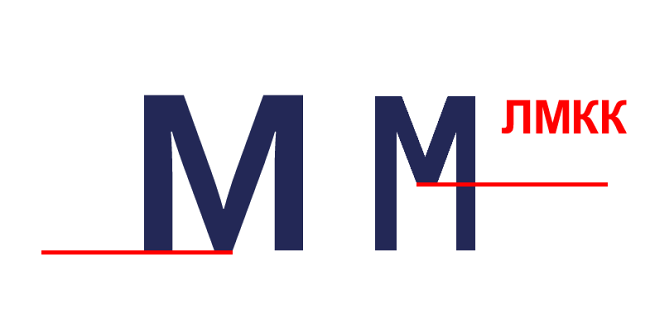
Take a look at a can from another dairy plant.
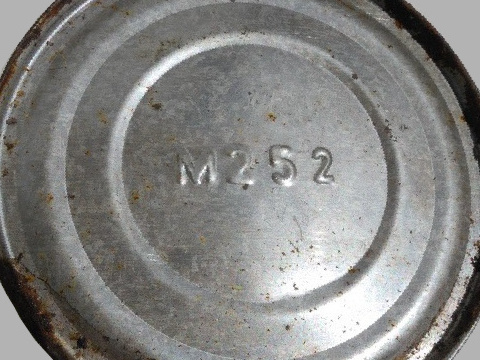
And here is the Lyubinskiy Kombinat stamp.
In the Lyubinskiy Kombinat the figure eight is turned upside down vertically.

This is clearly visible in this photo. The specialist noticed it and even thought that the stamp is reversed.
Veterans step in
You may not understand the significance of what I am just about to say, but it is an enormous relief in my investigation. Ever since I dug up the tin can under the cedar on the location where the bodies of Doroshenko and Krivonischenko were found I have been trying to narrow down the year that it was made. We know which plant made the condensed milk and that the Dyatlov group carried this type of can in their supplies, but if I have to present evidence in court I need to be able to prove beyond a reasonable doubt that this can was manufactured in 1958, and not 1948, 1968 or 1978. Last week I managed to get an appointment with the Chief Director of the Lyubinskiy Molochnokonservnyy Kombinat. They appealed to their veterans who started digging into their basements for old condensed milk (сгущенка). Today, June 22, 2023, we have the first old can from condensed milk especially brought to light for my investigation. This can was manufactured by the 3rd shift of January 31, 1962. This is hard evidence. I have an idea how to prove my theory if I find cans from this period of time with "8" stamped at the bottom. My claim is that in 1958 the "8" was flipped vertically (top circle is bigger than the bottom) and that most probably didn't make that same mistake 4 years in a row. Again, this is huge, although it might not seem like this to people that are not following my endeavors.
The plant has a museum. They asked me to bring a book for their museum and I will also bring them the tin can I found in 2022. It deserves its place in the museum. The management of the plant are ecstatic to be part of the Dyatlov Pass saga and promised to help with all they can. I am going to Omsk after the expedition to the Dyatlov Pass to meet with these nice people that are helping with my investigation.
M272
Stamp on the bottom M272
M27 = Lyubinskiy Molochnokonservnyy Kombinat (see State standard)
2 = the year of make ends in "2" (see State standard)
Stamp on the top 331A76
According to the standards the can is sweetened condensed milk (76) manufactured by the 3rd shift (3) on January 31st (31A) (see State standard)
A - January
Б - February
В - March
Г - April
Д - May
Е - June
Ж - July
И - August
К - September
Л - October
М - November
Н - December
The 8th letter in the alphabet "З" is omitted since it resembles the number "3" (see State standard)
The label says ГОСТ 2903-55 (see State standard)
This means the can is manufactured after 1955 and before 1966 when the next standard ГОСТ 11811-66 kicks in.
So we have year of make between 1955 and 1966 and ends in 2 which leaves us with 1962. In the context of our investigation all we can say is that the font of our "mystery" can and this one are the same. But I learned something else that gives me a big advantage, we can judge about the year of make by the GOST (State standard) printed on the label because it says the year. So the period of time is narrowed by the printed standard and the next year a new was published. See State standards about canned condensed milk →


